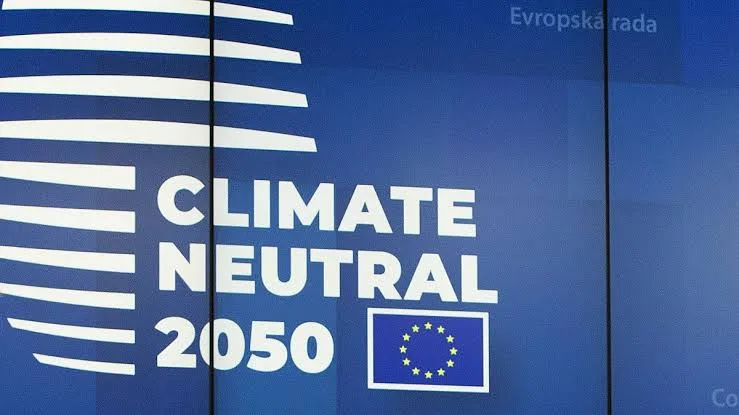In a significant step towards achieving its ambitious climate goals, the European Union has reached a landmark agreement to implement a carbon border tax. The deal, which was finalized after months of intense negotiations, aims to reduce greenhouse gas emissions and promote sustainable trade practices.
The carbon border tax, also known as the Carbon Border Adjustment Mechanism (CBAM), will impose a levy on certain imported goods from countries with less stringent climate policies. The tax will apply to goods such as cement, steel, aluminum, fertilizers, electricity, and hydrogen, which are deemed to have a high carbon footprint.

According to the agreement, the CBAM will be phased in gradually, starting with a transitional period from 2026 to 2028, during which importers will be required to report their embedded emissions. From 2029, importers will be required to purchase CBAM certificates to account for the greenhouse gas emissions embedded in their imports.
The CBAM will be calculated based on the difference between the carbon price paid in the country of origin and the carbon price in the EU’s Emissions Trading System (ETS). The revenue generated from the CBAM will be used to support the EU’s climate goals and fund research and development of low-carbon technologies.

The deal is seen as a major victory for the EU’s efforts to reduce its carbon footprint and promote sustainable trade practices. The EU has set ambitious targets to reduce its greenhouse gas emissions by at least 55% by 2030 and become carbon neutral by 2050.
The CBAM is also expected to level the playing field for EU industries, which have been subject to strict climate regulations and carbon pricing. By imposing a carbon tax on imports, the EU aims to prevent companies from relocating production to countries with less stringent climate policies, a practice known as “carbon leakage.”
However, some critics have raised concerns about the potential impact of the CBAM on trade relations with countries outside the EU. Some have argued that the tax could be seen as protectionist and may lead to retaliatory measures from affected countries.
In response to these concerns, EU officials have emphasized that the CBAM is designed to be WTO-compliant and will be implemented in a way that minimizes disruptions to global trade. They also point out that the CBAM will encourage countries to adopt more ambitious climate policies and reduce their greenhouse gas emissions.
The EU’s landmark deal on the carbon border tax is seen as a significant step towards achieving its climate goals and promoting sustainable trade practices. As the world grapples with the challenges of climate change, the EU’s initiative is likely to inspire other countries to follow suit and adopt similar measures to reduce their carbon footprint.
Key Features of the Carbon Border Tax

- Applies to goods such as cement, steel, aluminum, fertilizers, electricity, and hydrogen
- Phased in gradually, starting with a transitional period from 2026 to 2028
- Importers will be required to report embedded emissions and purchase CBAM certificates from 2029
- CBAM will be calculated based on the difference between the carbon price paid in the country of origin and the carbon price in the EU’s ETS
- Revenue generated will be used to support EU’s climate goals and fund research and development of low-carbon technologies
Reaction to the Deal
- “The carbon border tax is a game-changer for the EU’s climate policy. It’s a strong signal to the rest of the world that we are committed to reducing our carbon footprint and promoting sustainable trade practices,” said EU Climate Commissioner Frans Timmermans.
- “The CBAM will level the playing field for EU industries and prevent carbon leakage. It’s a win-win for the climate and EU businesses,” said EU Industry Commissioner Thierry Breton.
- “The EU’s carbon border tax is a protectionist measure that will harm trade relations with countries outside the EU,” said a spokesperson for the US Chamber of Commerce.
Implications for Global Trade
- The CBAM is likely to have significant implications for global trade, particularly for countries that export goods to the EU.
- Countries with less stringent climate policies may be forced to adopt more ambitious targets to avoid the carbon tax.
- The CBAM may lead to retaliatory measures from affected countries, potentially sparking a trade war.
Next Steps
- The EU will now begin implementing the CBAM, including developing guidelines and regulations for importers.
- The EU will also engage with countries outside the EU to promote sustainable trade practices and encourage the adoption of more ambitious climate policies.
The EU’s landmark deal on the carbon border tax is a significant step towards achieving its climate goals and promoting sustainable trade practices. As the world grapples with the challenges of climate change, the EU’s initiative is likely to inspire other countries to follow suit and adopt similar measures to reduce their carbon footprint.
